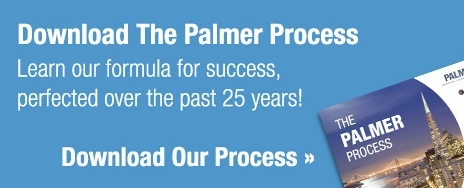Since the advent of the Internet as a marketing tool, we have seen a new marketing dynamic come into play and start competing with the traditional advertising world that Don Draper (1960’s ad man from the hit show “Mad Men”) dominates so well. Inbound marketing is now a marketing strategy that heavily competes with traditional advertising and marketing practices.
First off, what’s the difference?
Generally, outbound marketing includes the traditional, one-way advertisements and promotions sent out through print ads, direct mail, flyers, television and radio.
![]() Inbound marketing is a term coined by Brian Halligan, the founder of the popular inbound marketing software HubSpot. According to HubSpot, inbound marketing is “marketing with a magnet, not a sledgehammer — marketing based on content that attracts and nurtures prospects, not spam that interrupts them.”
Inbound marketing is a term coined by Brian Halligan, the founder of the popular inbound marketing software HubSpot. According to HubSpot, inbound marketing is “marketing with a magnet, not a sledgehammer — marketing based on content that attracts and nurtures prospects, not spam that interrupts them.”
Outbound marketing is often considered a wide dispersion form of marketing, similar to a shotgun sending promotional messages across a wide field of consumers.
On the other hand, inbound marketing allows consumers who are searching for a product or service to find your business; this may involve the production of search engine optimized websites, appropriate interlinking with partner sites and/or social media marketing.
Many traditional business models have devoted the majority of their marketing dollars to outbound marketing, but this has changed in recent years as the Internet has become the marketing venue of choice for many businesses. While most businesses tend to emphasize either inbound or outbound marketing, there are some good reasons why using an integrated approach is more effective.
1. Lead cultivation: It is important to cultivate the leads that have been acquired through an inbound or outbound marketing strategy. Your company may use direct mail as a means of collecting information about potential customers, and then use a social media link to help draw them to your landing page. Or conversely, you may send out an email blast to all of the leads you have gathered from your content links. In either case it is important to use the counter strategy to help solidify those relationships.
2. Event promotion: Most outbound marketing initiatives are short term, which is highly effective for promoting events. Inspiring curiosity and interest in the general public for an upcoming event is well complemented by providing details or “insider” discounts to existing customers on your website or social media accounts. Many of the potential consumers who follow your promotions to your website should be delighted to receive extra information about an upcoming sale or trade show, as well as receiving a coupon or promotional item.
Palmer Example: For last year’s Asparagus Festival, Palmer aimed to increase online ticket sales. While the online tickets were heavily promoted on social media, the website and online banner ads, we also urged fans through print, radio and television ads to purchase tickets online. The result? Online ticket sales for the festival increased by over 30%.
3. Content propagation: The visitors to your website shouldn’t be the only ones to enjoy and benefit from the content you have produced. Why not try including a particularly good blog post in your newsletter or direct mail flyer? Not only does this recycled content provide an excellent introduction for your business to new customers, but it is also cost-effective. Be sure to include links and directions to online content in these outbound promotions as well.
4. Product reviews: Reviews and testimonials have been around since the beginning of marketing, but they have taken on new importance as more consumers are using them to discover and research companies and products. Using quotes from past customers on your PPC ads and direct mail can help generate greater interest in your products, especially if they are unique and intriguing. Flip the switch and use social media outlets to ask followers to review your products. This is a very quick and easy way to collect testimonials from customers to use in outbound promotional materials.
These days it seems agencies and companies are emphasizing one or the other. At Palmer we aren’t taking sides just yet. We see this as a time of transition and in that transition you can utilize both strategies - a synergistic approach, which will enhance and solidify your entire marketing strategy.





